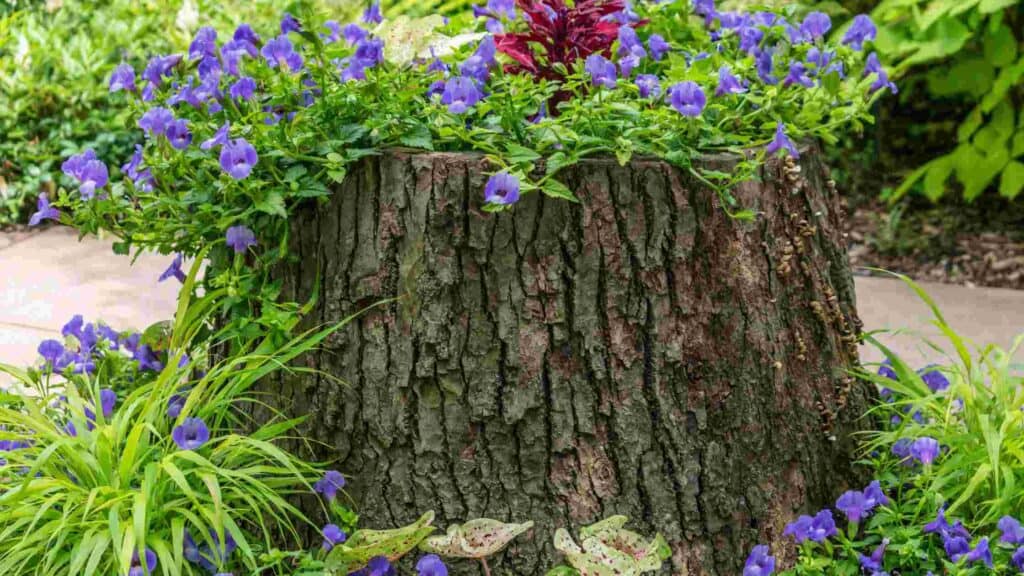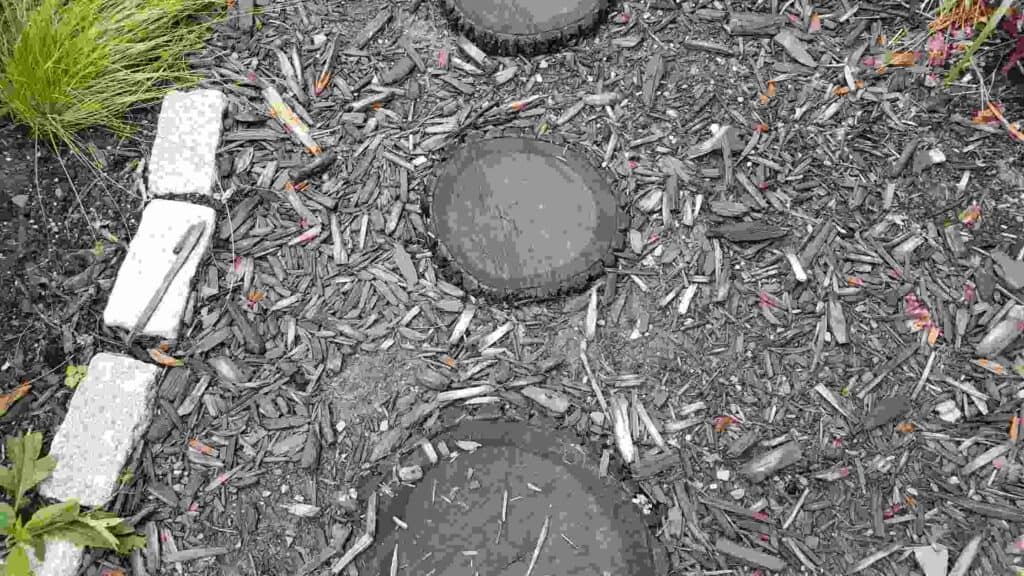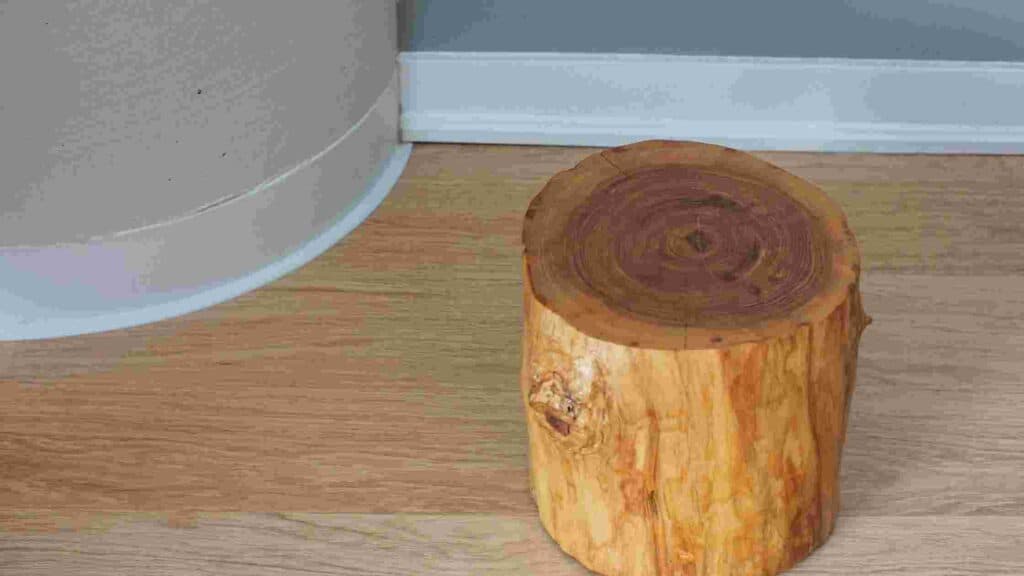In this post, we’ll delve into how to preserve a tree stump and explore creative ways to incorporate them into your landscape.
After a tree is taken down in your backyard, you’re often left with a stubborn tree stump in its place.
But here’s the thing: You don’t have to get rid of it!
In fact, you can turn that tree stump into a unique feature or even transform it into a cute furniture item for your home.
Get ready to discover the hidden potential of those seemingly lifeless stumps!
How To Preserve A Tree Stump
Once a tree is cut down, the tree stump still retains life. It continues actively absorbing moisture and utilizing oxygen, which makes it susceptible to attracting pests like termites.
Heat and moisture create an inviting environment for these pests, and they may lead to mold formation as well.
However, the durability and preservation potential of a stump depends on its species and size. Stumps from redwood, Western red cedar, and oak trees tend to be the easiest to preserve.
1. Tree Stumps As Pedestals: Creative Ideas For Outdoor Décor

Don’t let those old tree stumps go to waste! They can serve as unique pedestals, adding a touch of charm to the exterior of your home.
With a little creativity, you can transform these stumps into decorative platforms for colored globes, statues, or even climbing vines.
We’ll explore the various pedestal options for tree stumps, as well as guide you through the process of creating stunning home furniture like a tree stump table.
Get ready to unleash your imagination and elevate your outdoor décor to new heights!
Embracing Pedestal Possibilities
Tree stumps have immense potential as pedestals, allowing you to showcase artistic elements and enhance the visual appeal of your outdoor space.
Consider these ideas:
- Artistic Displays: Place statues or colored globes on top of tree stumps to create captivating outdoor focal points. Surround them with ground cover and vibrant flowers to add texture and color to your landscape. It’s an excellent way to blend natural elements with artistic flair.
- Climbing Trellis: Taller tree stumps can be repurposed as trellises for ivy and climbing vines. Let nature take its course as these plants gracefully ascend the stumps, adding a touch of elegance and greenery to your surroundings.
2. Stepping Stones

If pedestals aren’t your cup of tea, there are other creative ways to utilize tree stumps.
Use the tree stumps as stepping stones around your house, creating a natural and rustic pathway. For an extra pop of color, consider painting the slabs to suit your taste.
3. Blending With The Landscape: How To Preserve A Tree Stump In the Ground
Instead of shelling out a fortune to remove those old tree stumps (check out how to grind a tree stump safely), consider repurposing them as decorative showpieces in your landscape.
Here are a few ideas to preserve a tree stump in the ground:
- Hollowed-Out Planters: If the stump has already begun to decay inside, hollow it out and transform it into a unique planter. Make sure to look for termites and eliminate them before starting the project. This creates an eye-catching focal point that merges nature with artistry.
- Garden Platforms: If there are multiple tree stumps clustered together, trim them down to a flat level and create a garden surrounding them. This technique allows you to create elevated garden platforms that add dimension and visual interest to your landscape.
- Seating and Tables: By preserving the stump and leveling its top surface, you can fashion it into a natural seat or a tree stump table. Embrace the rustic charm and invite a touch of nature into your outdoor seating area.
4. Tree Stump Table

If you’re up for a unique furniture project, consider crafting a stunning tree stump table. Follow these steps to transform a tree stump into a gorgeous centerpiece for your home:
Materials
- Epoxy
- Sand
- Stain
- Polyurethane sealant (for preservation)
Tools
- Foam brush
- Orbital Sander with sanding sponges (in various grits like 60, 80, 120, and 220)
- Chisels in different widths
- Scrubber brush
- Small, medium, and large stain brushes
- Hammer
Creating The Feature
- Bark Removal: Use a rotary hammer or chisel to remove the bark from the stump. Based on the stump’s age, you may need to employ different tools. Be thorough in removing any sap remnants as well.
- Sanding for Smoothness: Employ the orbital sander with various grit sandpapers to achieve the desired smoothness and finish. Thoroughly vacuum the crevices to eliminate any excess dust. For significant cracks, fill them with a clear epoxy wood filler, using tape to prevent leakage.
- Applying Stabilizer and Tree Stump Sealant (what to put on a tree stump to preserve it): Let the stump reach room temperature before proceeding with preserver or stain application. Use a wood stabilizer to prevent cracking, warping, or rotting. Begin with a little amount and gradually add more if needed. Protect the stump’s top by covering it with plastic and allow it to dry for 2-4 hours. Apply two additional coats of sealer to the sides and the top, allowing each coat to dry completely.
FAQs
1. How long do tree stumps last?
Tree stumps can last for several years or even decades, depending on factors such as the type of tree, environmental conditions, and decay processes.
2. How do you dry out a tree stump?
To dry out a tree stump, you can promote evaporation by exposing it to sunlight and wind, drilling holes into the stump to aid air circulation, and removing any surrounding soil or debris that may retain moisture.
3. How to preserve a tree branch?
To preserve a tree branch, you can apply a wood preservative or sealant to protect it from decay and pests. Additionally, keeping the branch in a dry and well-ventilated area can help prevent deterioration.
4. How to seal wood stumps for outdoor use?
For sealing wood stumps for outdoor use, you can apply an outdoor wood sealant or a wood preservative specifically designed for outdoor conditions. Ensure the sealant covers the entire surface of the stump, following the manufacturer’s instructions for application.
5. What can you do for sealing tree stumps for seats?
To seal tree stumps for seats, you can follow similar steps as sealing wood stumps for outdoor use. Apply a suitable outdoor wood sealant or preservative that provides protection against moisture, rot, and pests.
It is important to choose a sealant that is non-toxic and safe for contact with skin if the stump will be used as a seat.
Conclusion: How To Preserve A Tree Stump
With a little imagination, those old tree stumps can be transformed into captivating pedestals, breathing new life into your outdoor décor (learn how to make a tree stump planter).
Whether you choose to create artistic displays, climb trellises, or embark on a tree stump table project, the possibilities are endless.
Unleash your creativity, embrace nature’s beauty, and let these stumps become the standout features of your exterior space. Get ready to make a statement and leave your guests in awe of your one-of-a-kind outdoor design!
You might also be interested in checking out the article on the best tree stump killer.
